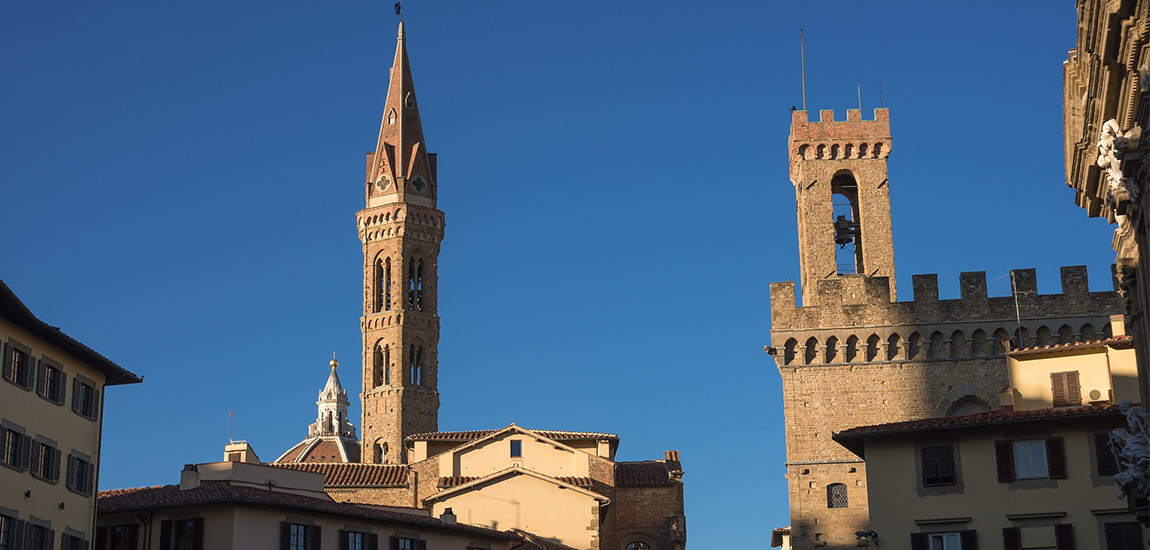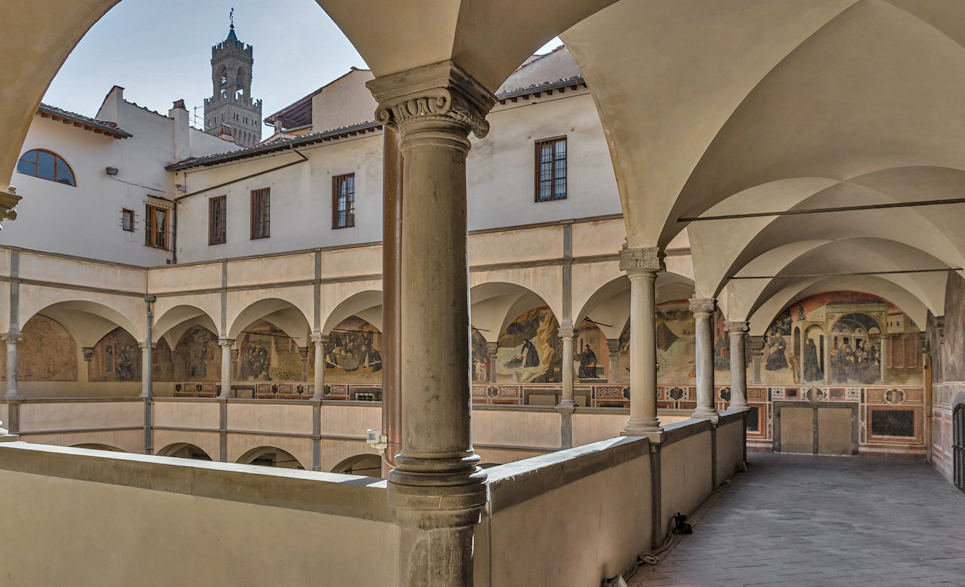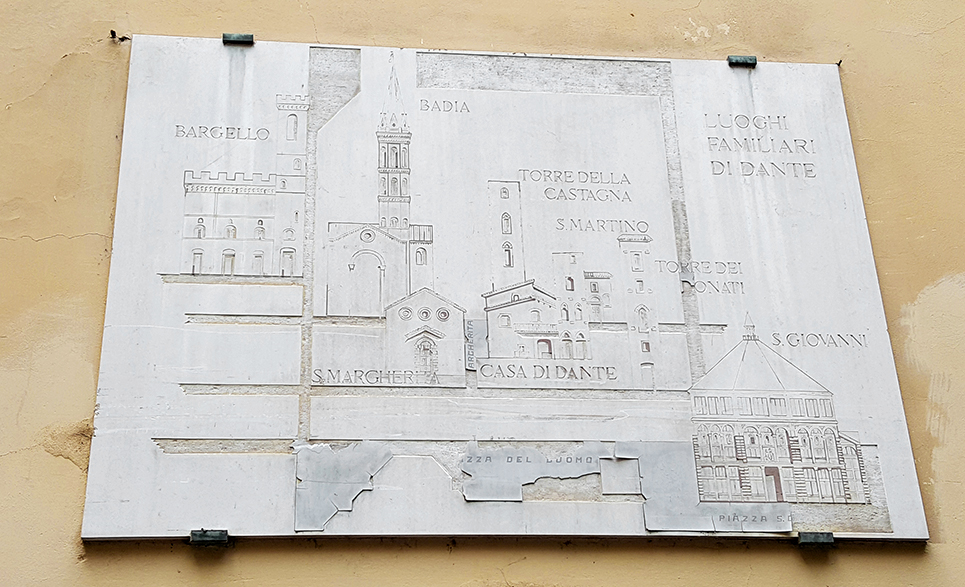
Ancient Florence: Badia Fiorentina
With Brunelleschi’s Dome, Giotto's bell tower and the tower of Palazzo Vecchio to reign supreme in the Florentine skyline, the beautiful bell tower of the Badia Fiorentina often goes unnoticed, although clearly visible next to the tower of the Bargello museum.
It
indicates the position of one of the
oldest and most important churches in Florence, built around the
pre-existing Santo Stefano church around 978, at the behest of Willa di
Toscana. Later, his son Ugo, the "Great Baron" mentioned by Dante in
the Divine Comedy, continued his mother's work with large donations, so many
that he is still remembered every December 21 with a mass celebrated in his
honor.
The Benedictine abbey, presents some architectural inconsistencies, this is because in 1285 it underwent a radical remaking in Gothic style by Arnolfo di Cambio, the famous architect of Palazzo Vecchio, Santa Maria del Fiore and Santa Croce. The work lasted about thirty years, during which time its orientation was changed, to align it with the classical layout of Christian churches, placing the apse (the back of the central nave) to the east in order to let the sunlight in every morning. The profiles of the Gothic windows of the nave, now blind, are still visible on Via del Proconsolo.
In
addition to this, Arnolfo di Cambio also designed the elegant bell tower with a hexagonal base, built
on the cylindrical base of the original bell tower dating back to the 10th
century.
This was not the only restoration that the abbey underwent over the years. In 1627, it changed its face again. The layout of the church is altered once more, reduced to a Greek cross, and transformed what was once the transept (the transversal body of the church that intersects the central nave perpendicularly) in the main axis.
It was on this occasion that the access to the church was changed, now placed on the north side, and the carved wood coffered ceiling was added.
The church, rich in history and works of art of considerable value, today can be accessed from Via del Proconsolo and Via Dante Alighieri.
Inside we find the Apparition of the Virgin to Saint Bernard (1482-1486) by Filippino Lippi; the Assumption of the Virgin Mary and Saints (1568) by Giorgio Vasari; works by Mino da Fiesole such as the Funeral Monument to Bernardo Giugni (1466-1469), the Funeral Monument to Ugo di Toscana (1469-1481) and the marble Dossal with Madonna and Child (1464-1470); remains of early 14th century frescoes attributed to Nardo di Cione and much more.
From the abbey one can access the delightful chiostro "degli Aranci" (cloister of orange trees), designed by Bernardo Rossellino between 1432 and 1438. Although there are no orange trees in it, the name derives from a first attempt to plant these citrus fruits in Florence, failed due to the winters being too cold compared to those in southern Italy.
On
the walls of the cloister, formed by two overlapping arcades, the frescoes with stories of the Life of Saint
Benedict are still visible.

The Badia Fiorentina is a place that has its roots in the ancient Florence, linked to some of the most important Florentine figures. Here Boccaccio held the famous readings of the Divine Comedy in 1373; and here, before that, Dante saw Beatrice Portinari for the first time during mass and fell in love with her.
It
is really worth making a little detour from the usual tourist routes to discover
this Florentine treasure!




